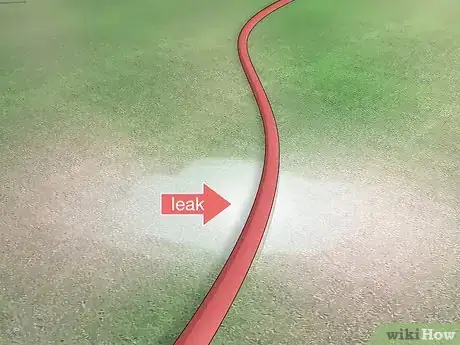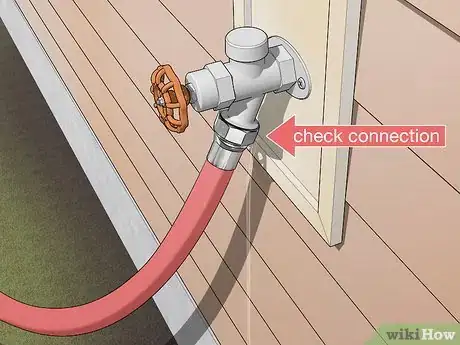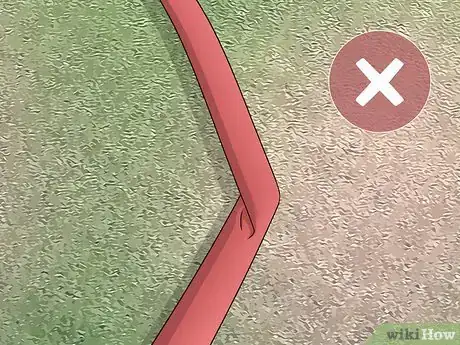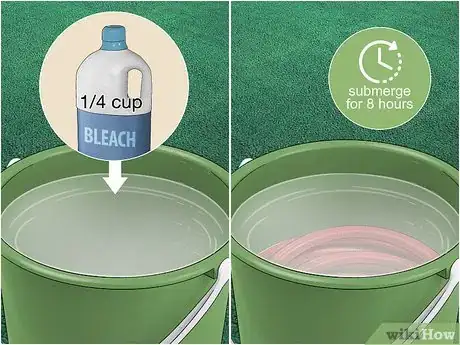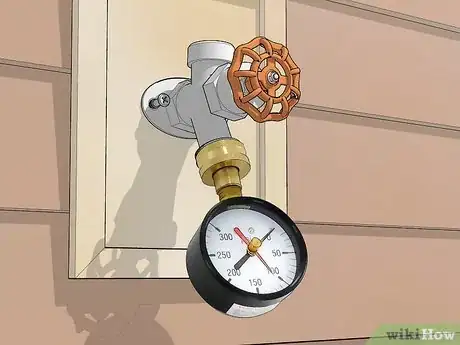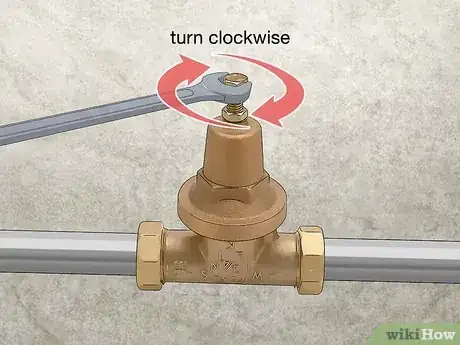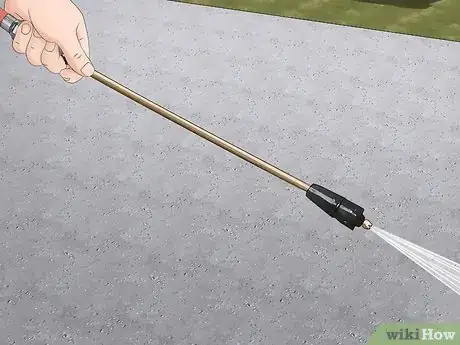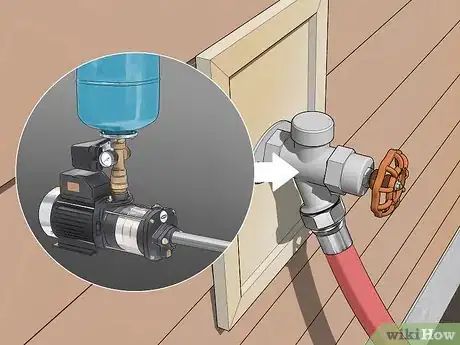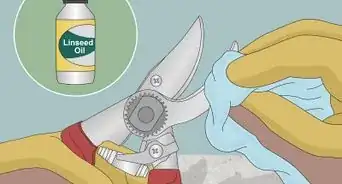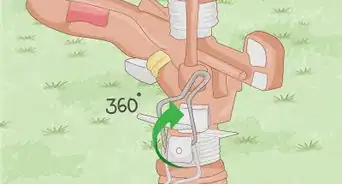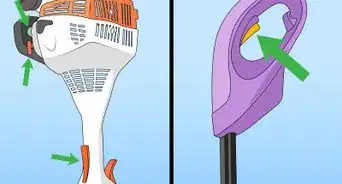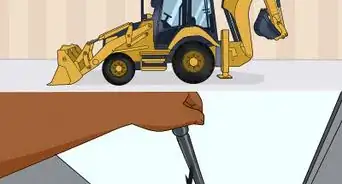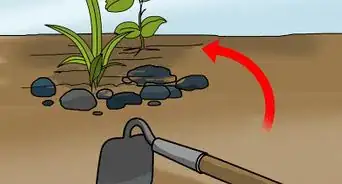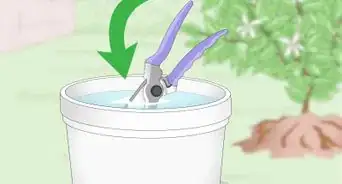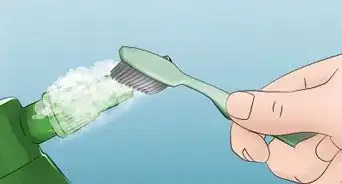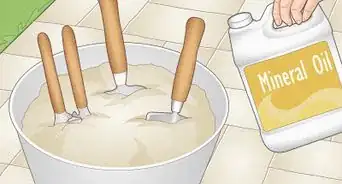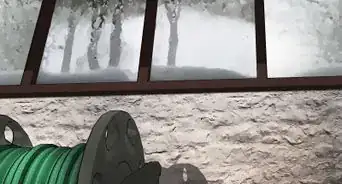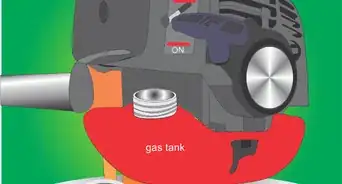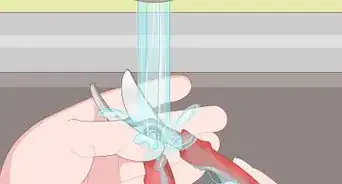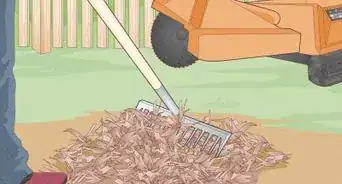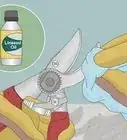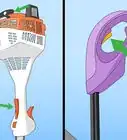This article was co-authored by Dave Jones. Dave Jones is a Professional Plumber and the Midwest Regional Vice President at Roto-Rooter Plumbing & Water Cleanup. In 1992, Jones joined Roto-Rooter as a drain service technician at the age of 18. Since then, he has risen through the ranks into positions of increasing authority. Dave served as general manager of Roto-Rooter’s Charlotte, North Carolina, and Atlanta, Georgia branches before being promoted to Contractor Area Manager and later to Regional Vice President. Dave holds Master Plumber Licenses in Pennsylvania, North Carolina, and Georgia.
This article has been viewed 132,858 times.
Low pressure in a garden hose can make your daily tasks much more difficult. Fortunately, fixing the problem is usually simple. Most low-pressure problems come from the hose itself. Check for leaks, twisting, and blockages. Fixing these issues will increase the pressure. If your hose is in good shape, then try a high-pressure nozzle or pressure booster to increase your hose's power. Also check your home water pressure and turn it up if it's too low.
Steps
Fixing Problems with Your Hose
-
1Look for leaks in your hose. The most common cause for a drop in water pressure is a leak in your hose. Start by extending the hose all the way and laying it flat on the ground. Then turn the water on. Move along the hose and see if water is escaping from any points.
- These leaks can be very small and might even just look like a bit of mist, so get close to the hose. You might even have to bring your eyes down to the ground level.
- If you do detect a leak, you can repair the hoes with a rubber patching kit.
-
2Confirm that your hose is fully-connected to the spigot and nozzle. First look at the nozzle section and see if any water is leaking. Then check where the hose connects to the spigot. Improper connections can drop the hose pressure. If you see leaks anywhere, tighten the connection to fix the problem.
- Check any other connections that your hose is attached to as well. If you have a splitter, for example, make sure these connections are secure.
- Also try turning off the hose and unscrewing it from the nozzle and spigot. Then reattach them. This clears blockages that were preventing the water from flowing.
Advertisement -
3Make sure the hose didn’t get twisted. If you were using your hose and suddenly the water pressure dropped, the hose may have gotten twisted. Walk along the length of the hose and look for any bunched-up spots. Smooth and straighten the hose out to see if this fixes the problem.
- If your hose is rolled up on a reel, check the rolled portion as well. Sometimes hoses twist up on the reel if they weren’t rolled up properly.
-
4Clean the hose to get rid of dirt and blockages. Another cause for poor water flow is dirt inside the hose. If there are no leaks and the connections are secure, then this may be the culprit for the pressure drop. To clean the hose, fill a bucket with water and add 1/4 cup (59 ml) of bleach. Then submerge the hose and leave it sitting for 8 hours. After this, put the hose in another bucket of plain water for 1 hour. Then connect the hose and spray it to dislodge any leftover dirt.[1]
- Coil the hose up so it fits in the bucket better. Don't pinch or twist any areas or the water won't flow all the way through it.
- Generally, conduct this cleaning once per year at the beginning of the spring. This removes any dirt that built up while the hose wasn’t in use for the winter.
Improving the Pressure in Your Hose
-
1Test the water pressure in your home. Purchase a test gauge from your local home improvement center. Find the main water supply for your home. This is usually in the basement, or sometimes on the building exterior. Turn off all faucets and any other appliances that use water in your home. Then screw a pressure gauge onto the nozzle at your main water supply. Twist the valve on the nozzle counterclockwise. Then take the measurement that the pressure gauge reads.
- If there is no nozzle at your main water supply, find the nearest faucet and attach the gauge there.[2]
- Normal home water pressure is 40-60 psi, with an ideal range between 45 and 55. If your pressure reading is below that, or on the low end, then low home water pressure could be causing the problems with your hose.[3]
-
2Increase your home water pressure if it reads low. If your home water pressure is below 45 psi, this could cause low hose pressure. On your main water supply near the water meter, there is a pressure reducing valve (PRV) that controls the water flow into your home. Use a wrench and turn the bolt on the PRV clockwise to increase the pressure. Work in quarter-turn increments, then recheck the pressure. Stop when you’ve brought the pressure up to the level you want.[4]
- Some PRVs have screws on top instead of bolts. In this case, use a screwdriver and turn the screw clockwise.
- Do not bring your water pressure over 60 psi. Household pipes can’t handle this much pressure and they could burst.
- Speak to a plumber if you can’t adjust the water pressure yourself. Perhaps your PRV doesn’t function properly anymore and needs to be replaced.
-
3Install a high-powered nozzle if your home's water pressure is normal. If your home water pressure isn’t low, then there are several ways you can boost the pressure in your hose specifically. An easy, quick fix is a high-powered nozzle. Many different types are available from garden and hardware stores or online. Invest in one of these to see if it fixes your problem.
- Common high-powered nozzles are fire hose styled with a long, thin tube. This concentrates the water and increases the pressure.
- Remember to only use a high-powered nozzle for appropriate tasks. Don’t water delicate plants or flowers with it or you could damage them.
-
4Connect your hose to a water pump to boost the pressure. As an alternative to adding a new nozzle, try a water pump. These devices are similar to power washers. Screw the end of your garden hose into the pump. Then connect the pump to an outlet and use the hose attached to the pump for a stronger stream. Use a pump if you need more pressure for larger jobs, like spraying long distances or pressure-washing your home.[5]
- Pumps like these are available from hardware stores. Look at different varieties to find one that fits your needs. Some pumps also use gas power instead of electricity.
- There is a wide range of water pump types at various prices. They can range from $20 to several hundred dollars.
- More expensive pumps have more options for pressure settings, spray styles, hose length, and durability.
References
- ↑ https://gardenhoseadviser.com/how-to-clean-a-garden-hose/
- ↑ https://youtu.be/Xlwbzz9-azk?t=102
- ↑ https://www.popularmechanics.com/home/how-to/a1053/4202333/#:~:targetText=The%20typical%20inlet%20water%20pressure,a%20screw%2C%20as%20shown%20above.
- ↑ https://www.popularmechanics.com/home/how-to/a1053/4202333/#:~:targetText=The%20typical%20inlet%20water%20pressure,a%20screw%2C%20as%20shown%20above.
- ↑ https://greeneryguide.com/how-to-increase-water-pressure-in-garden-hose/
